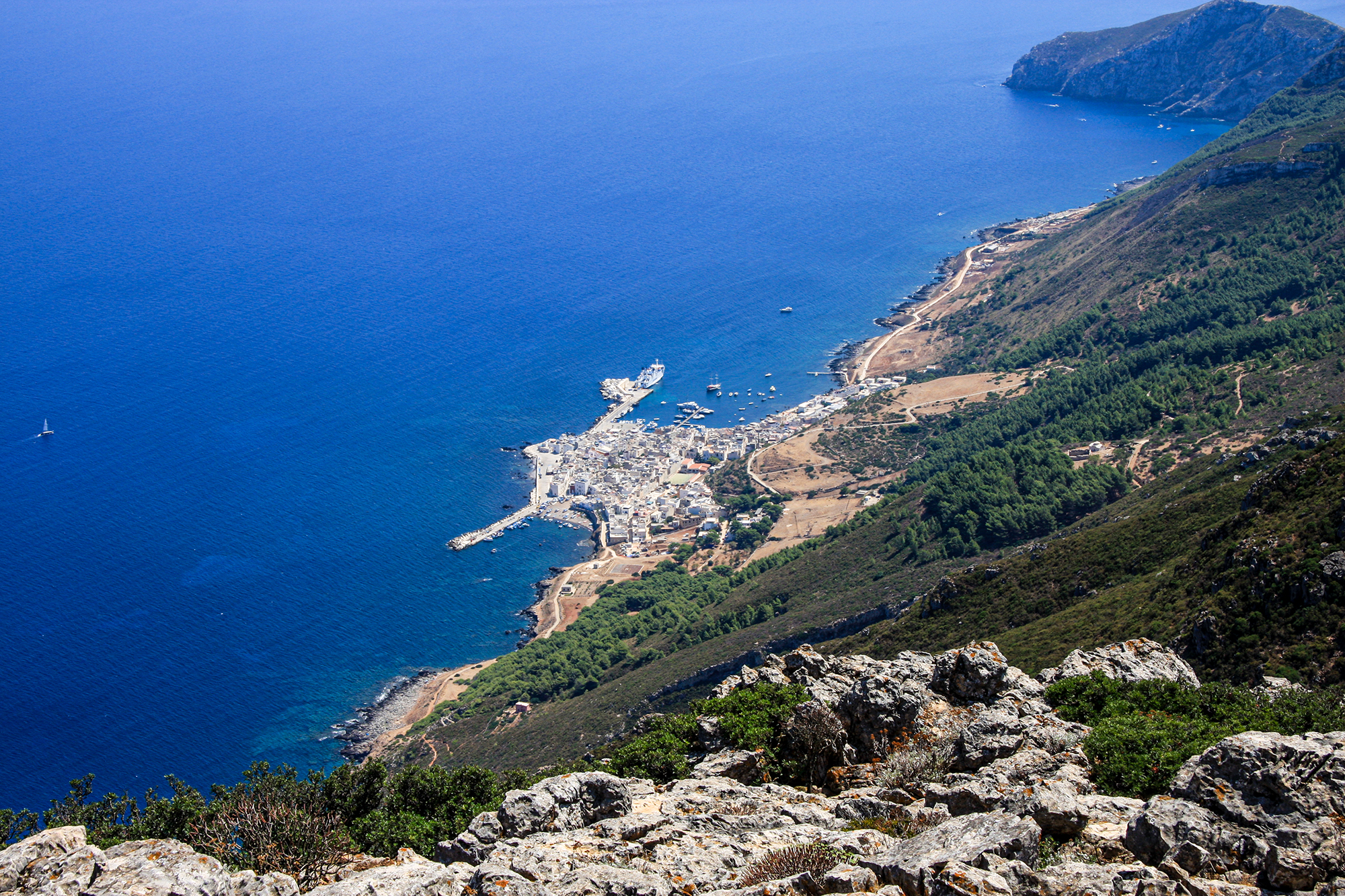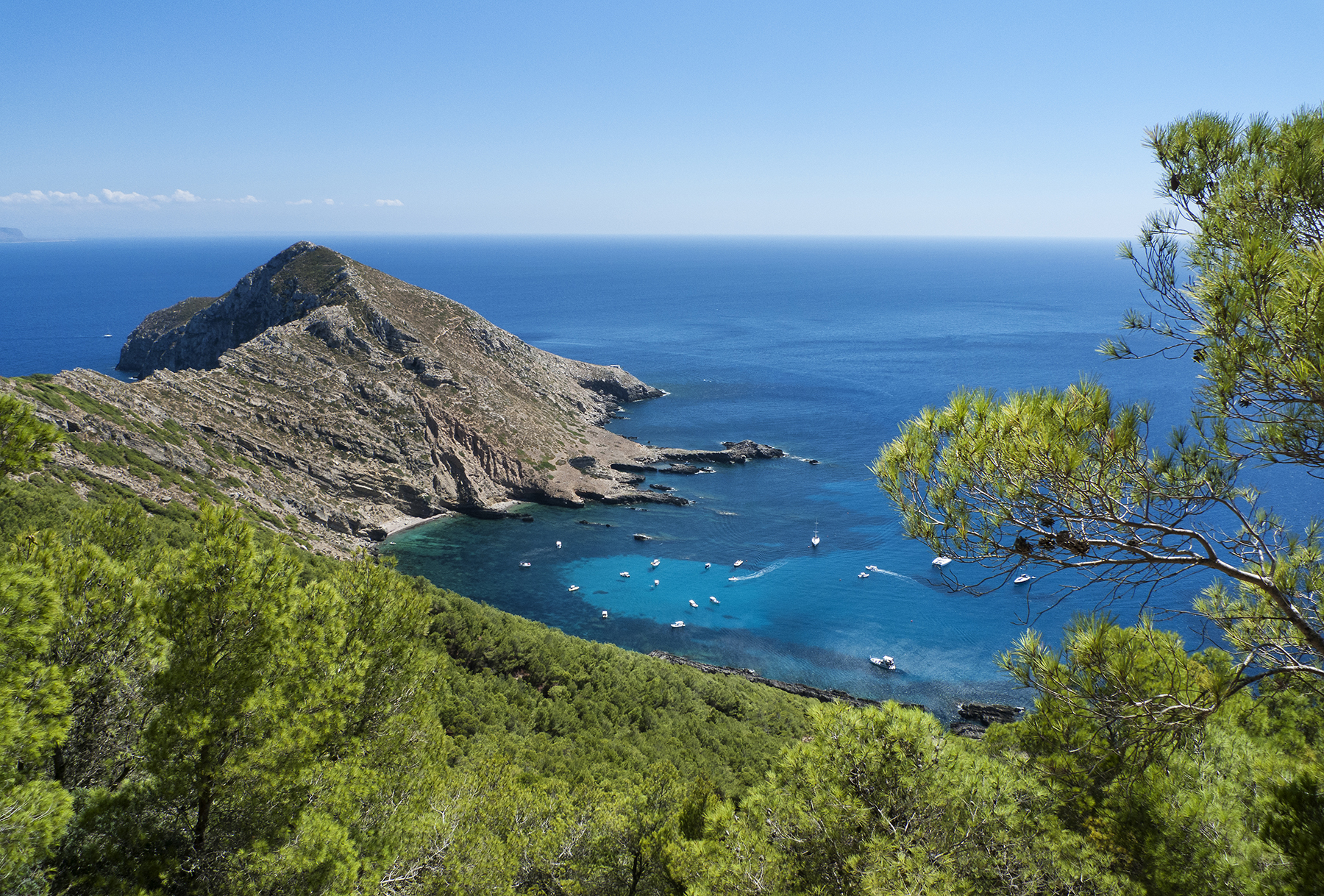Trekking Paradise And The Colors Of Botany
Distant and different, Marettimo is the wildest of the Egadi islands. Unlike its "sisters", it is mountainous (the highest peak is Monte Falcone, 686 meters) and has several water sources. Therefore, despite also having a beautiful sea and a very scenic coastline, with high cliffs and deep caves where the sea ignites the walls with incredible reflections, the island is a popular destination for trekking enthusiasts. For them, there are about ten trails built by the Forest Service, all well-trodden and carefully signposted, which wind through the entire territory of the island, starting from the village. Among spires and pinnacles, raptors and seabirds fly, and a dense and fragrant vegetation develops, rich in species and subspecies, plant associations, and even paleoendemisms. A paradise for botany enthusiasts, but also for everyone else who can immerse themselves in the colors and aromas of heather, euphorbia, cyst, rosemary, cabbage of the Egadi, wild carnations, Aleppo pines, and holm oaks, to name just a few of the plants of the rich Mediterranean vegetation. The coastal trail that, developing along the coast, leads from the village to the Punta Troia fort in about an hour, is the easiest, also suitable for "Sunday walkers".
Built on a rocky outcrop in the Middle Ages, the small castle was long used as a prison. Now it is a visitor center and information point of the Egadi Marine Protected Area which, with its 54,000 hectares, is the largest in Italy, with remarkable biodiversity. Here, for example, the largest meadow of oceanic posidonia in the Mediterranean (about 7700 meters) thrives, and monk seals and turtles have been sighted. The fort has been restored and has stunning terraces from which to look out over rocks and sea. The castle can also be reached by a more challenging path, which develops higher up, and in this case, you can see the site of Roman Houses, with some ruins dating back to the 1st century BC and the 4th century AD and an 11th-century early Christian church. Those who love views must not miss the climb to the Semaforo and especially to Monte Falcone. Speaking of the sea, it must be said that since the beaches are almost all quite difficult to reach, it is definitely advisable to rent a boat or be accompanied to the coves by the "marettimari" who offer a comfortable taxi service. The must-see sea is that of Cala Bianca with the Sirens' Caves, Cala Spalmatore, Cala Nera, Punta Bassano, Cala Marino. The center of social life is the village of Marettimo, where you can find small restaurants to taste the delicious lobster broth with broken spaghetti, a specialty of local cuisine. Here you can spend pleasant evenings in company, rent boats, gather information for walks... and stock up on the delicious honey. The quantity of aromatic herbs and the absence of pollution indeed favor the work of bees; in the village shops, you can find pure honey of rosemary, thistle, and heather, typical of Marettimo.
The caves are the characteristic feature of the Marettimo coast and a boat tour around the island to see them is a must for all visitors. Some of them are underwater and therefore reserved for those who are familiar with diving, such as the Cathedral Cave, which owes its name to the breadth of the cave and the quantity of stalactites and stalagmites that look like marble columns. Others, on the other hand, are more superficial and accessible with snorkeling, simply by swimming or even by boat. Among the most famous caves are the Camel Cave, the Thunder Cave, which owes its name to the noise produced when the sea is stormy, the Perciata Cave, and the Nativity Cave.
-
Information
Maria Cristina CastellucciLe Guide di Repubblica - Trapani e La Sicilia Occidentale

